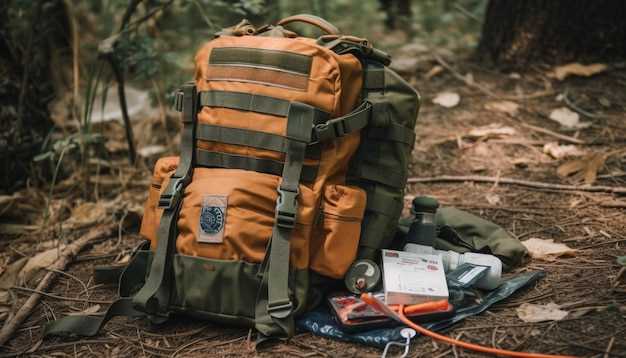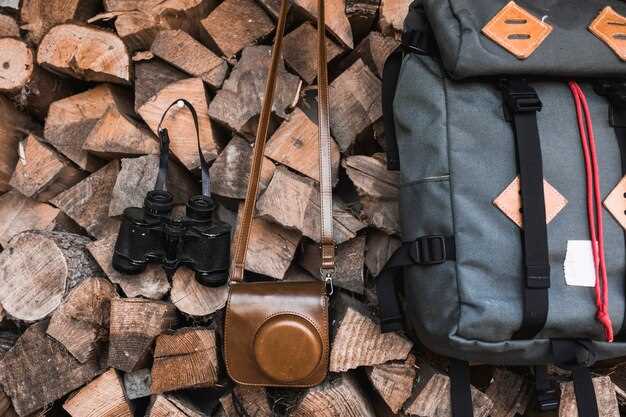
When embarking on a backcountry hunting expedition, ensuring your safety and the safety of your companions is paramount. The wilderness can be unpredictable, and the remote nature of backcountry locations necessitates preparedness. A well-thought-out first aid kit is not just an accessory; it is a critical component of your hunting gear that can mean the difference between a minor setback and a major crisis.
Equipping yourself with essential first aid gear tailored for the unique challenges of the backcountry is crucial. From high-altitude injuries to encounters with wildlife, understanding what to include in your kit is vital for addressing potential mishaps quickly. An effective first aid kit not only enhances your safety but also empowers you to focus on the hunt itself, knowing that you are prepared for unforeseen incidents.
In this guide, we will explore the must-have first aid gear every hunter should carry. By prioritizing safety and maintaining a well-stocked first aid kit, you can enjoy your backcountry hunt with peace of mind, ready to tackle any challenges the wilderness may present.
Key Items for Treating Common Hunting Injuries

When embarking on a backcountry hunting trip, a well-stocked first aid kit is essential for ensuring safety and dealing with potential injuries. Here are some key items that every hunter should have to effectively treat common injuries.
Adhesive Bandages are crucial for covering minor cuts and abrasions. They help protect the wound from dirt and bacteria, promoting faster healing. Always carry a variety of sizes to accommodate different injuries.
Gauze Pads and Adhesive Tape are vital for more significant wounds. Gauze pads can absorb blood and fluid, while adhesive tape secures them in place. This combination is essential for controlling bleeding and preventing infection.
Antiseptic Wipes or Solution should be included to clean wounds before dressing them. Maintaining cleanliness is vital in reducing the risk of infection and ensuring a safe recovery.
Hot and Cold Packs can be invaluable for treating sprains or strains. Cold packs reduce swelling and numb pain, while hot packs can help with muscle relaxation and increasing blood flow to promote healing.
Elastic Bandages are perfect for providing support and compression for sprains or strains. They help immobilize affected areas and can significantly aid in managing pain and preventing further injury.
Splints are essential for stabilizing broken bones or severe sprains. They assist in immobilizing the injured area to prevent further damage while waiting for professional medical assistance.
Pain Relievers such as ibuprofen or acetaminophen should be part of your gear to alleviate discomfort from various injuries. Always check for allergies and follow dosing instructions carefully.
Emergency Blanket is useful for warmth and protection in case of shock. It helps maintain body temperature, a critical factor in outdoor survival situations.
First Aid Manual is invaluable for providing guidance during emergencies. Familiarize yourself with its contents before your trip, ensuring you’re prepared to handle various situations effectively.
By carrying these essential items in your first aid kit, you can enhance your safety and readiness to respond to common hunting injuries while enjoying your backcountry adventures.
How to Assemble a Portable First Aid Kit for Remote Areas

When preparing for hunting trips in remote areas, ensuring safety is paramount. A well-assembled portable first aid kit is essential for addressing injuries and medical emergencies that may arise while away from immediate medical assistance. Here’s how to create an effective first aid kit tailored for backcountry adventures.
First, choose a sturdy and water-resistant container to house your supplies. This will protect your gear from environmental elements during your adventures. Consider a compact bag or a hard case that can fit comfortably in your backpack.
Next, stock your kit with basic medical supplies. Include adhesive bandages in various sizes for minor cuts and scrapes. Sterile gauze pads and adhesive tape are crucial for larger wounds, while antiseptic wipes or solution can help prevent infections. A pair of gloves is also vital for hygienic handling of injuries.
It is important to address pain relief and inflammation. Pack over-the-counter medications such as ibuprofen or acetaminophen for headaches or muscle aches. Additionally, consider including a topical pain reliever for immediate relief of aches from strenuous activities.
For outdoor hunting environments, ensure that your kit contains items specific to potential injuries sustained in the field. This includes a triangular bandage for sling applications, a tourniquet for severe bleeding, and a splint for immobilizing fractures. These items can significantly increase your ability to manage serious injuries until professional medical help is available.
Don’t forget to add a pair of tweezers and scissors to assist in removing splinters or cutting gauze. A small flashlight and a whistle can be crucial for signaling for help in case of emergencies. Waterproof matches or a fire starter may also be useful for signaling or treating hypothermia.
Finally, ensure that all members of your hunting group know the location of the first aid kit and are familiar with its contents. Consider taking a basic first aid and CPR course to better equip yourself with the knowledge to handle emergencies effectively. This preparation enhances safety and ensures a more enjoyable experience in the great outdoors.
Best Practices for First Aid in the Field During a Hunt
When hunting in the backcountry, safety must be your primary concern, and being prepared with first aid knowledge is crucial. Familiarize yourself with basic first aid practices before heading into the field. Understanding how to handle emergencies ensures you can respond effectively should an injury occur.
Always carry a well-stocked first aid kit tailored for the specific needs of your hunting trip. Include essentials such as adhesive bandages, antiseptic wipes, gauze, and a splint. Additionally, consider including items like cold packs and snake bite kits, depending on the terrain you will be traversing.
In an emergency, the first step is to assess the situation. Ensure the area is safe and that no further danger is present. If an injury occurs, quickly evaluate the severity. For minor cuts and scrapes, clean the area, apply antiseptic, and dress the wound appropriately. Maintain a calm demeanor, as this can help reassure injured parties and facilitate better decision-making.
For more serious injuries, such as fractures or severe bleeding, stabilize the injured person and avoid moving them unless absolutely necessary. Apply direct pressure to control bleeding and elevate the injury if possible. In case of a potential spinal injury, keep the individual still and seek help through available communication devices.
Stay informed about the location of nearby emergency services and how to access them in case of an urgent situation. Sharing your itinerary with someone who is not participating in the hunt can also enhance safety, enabling them to alert authorities if you do not return as scheduled.
Training in wilderness first aid can provide valuable skills and confidence. Consider taking a course to enhance your response capabilities, which will allow you to provide the best care for yourself and your hunting companions in the field.